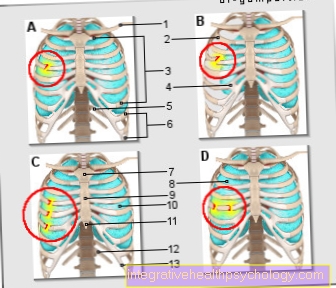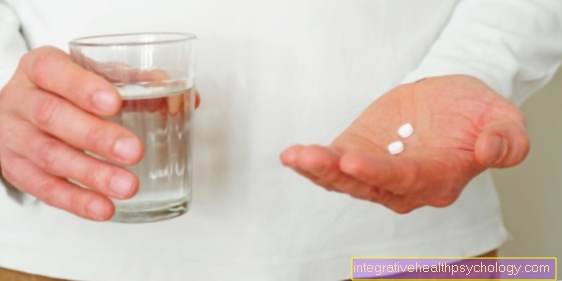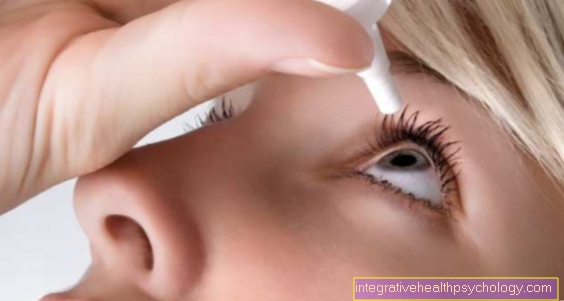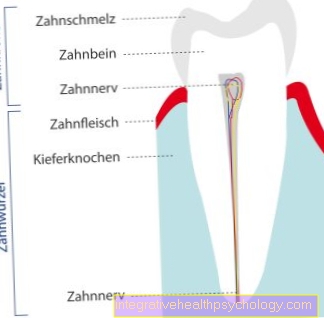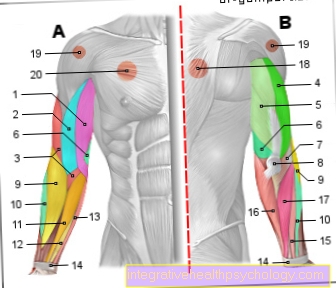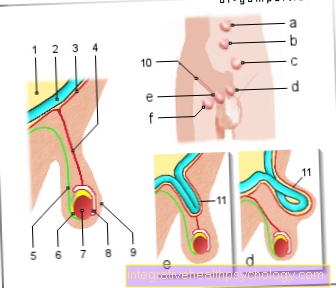Tetracycline
Classification

The antibiotic tetracycline belongs to the group of tetracyclines. You can also count doxycycline and minocycline in this group. These antibiotics are particularly popular in the outpatient sector.
effect
Tetracyclines inhibit the protein biosynthesis of the bacteria and thus have a growth-inhibiting effect (bacteriostatic). The mechanism is now relatively well researched. It is assumed that tetracyclines bind to the so-called 30 S subunit of the 70 S ribosomes and thus inhibit the chain lengthening of the proteins.
Areas of application
The spectrum of pathogens of tetracycline are Chlamydia psittaci, C. trachomatis and mycoplasma. Also in the treatment of Lyme disease and in prophylaxis of malaria it is used.
Side effects
Symptoms of the gastrointestinal tract and damage to the mucous membranes are observed quite frequently. In rare cases, so-called pseudomembranous colitis can occur, which must then be treated separately. Tetracyclines penetrate teeth and bones and can be deposited there.
The reason is the ability to form a complex with calcium. The storage in bones and teeth is irreversible and can lead to growth disorders of the bones and yellow discolouration and enamel defects on the teeth.
During treatment with tetracyclines, one should avoid the sun, because an increased sensitivity to light with skin reactions (photodermatosis) can be observed relatively often. Tetracyclines are kidney and liver damaging, can cause increased pressure in the skull as well as dizziness and unsteady walking and standing.
Read our article on this:
- Side effects of antibiotics
and - pseudomembranous colitis
Contraindications
In the pregnancy and at Children under eight years of age as well as in combination with milk, iron and drugs of the substance group Antacids, tetracyclines should not be given.


